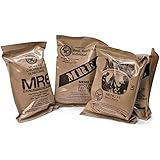1. Engaging the Community in Preparedness
Understanding Community Needs
It’s essential to engage with the people in your community to truly understand what their needs are. I’ve found that hosting community meetings where everyone can voice their concerns and experiences is a great way to start. We all come from different backgrounds and have unique worries when it comes to disasters.
Take the time to listen to elderly residents—they often hold a wealth of knowledge about past disasters and the resilience strategies that worked for them. You’d be surprised how much history can help us prepare for the future.
After gathering insights, it’s beneficial to create surveys that track people’s priorities and concerns. This way, we can tailor our disaster preparedness plans to meet those needs effectively.
Building a Support Network
Creating a network of support is crucial. I’ve seen how effective it is to connect local organizations, businesses, and schools to form a disaster response team. This collective effort can provide immediate relief to those affected in times of crisis.
Remember, it’s all about strengthening ties. An excellent way to start is through local volunteer groups—organizing drills and workshops, which can help everyone feel more at ease when the real deal happens.
Social media is also a vital tool for keeping everyone connected. Platforms like Facebook can help create groups where community members can share resources, tips, and their own experiences during an emergency.
Providing Training and Resources
I’ve come to see that providing training to community members makes a world of difference. Offering courses on first aid, fire safety, or even emergency plan development is something that can empower individuals and groups.
Moreover, creating emergency kits or resource centers where people can access information on disaster preparedness can help everyone feel more confident and less anxious. The more prepared we are, the less chaotic it’ll be if something goes down.
== > What if ... Get a FREE Subscription to PREPARE
Lastly, collaborating with local authorities to bring workshops or training sessions can ensure everyone receives accurate and reliable information. It’s all hands on deck!
2. Strengthening Infrastructure
Assessing Vulnerabilities
First things first, assessing the vulnerabilities in your local infrastructure is a must. I once participated in an assessment where we identified weak points, like aging bridges and poorly maintained roads. It was eye-opening to see how many potential hazards exist that we often take for granted.
Working with local planning commissions to conduct these assessments is key. The more detailed the evaluation, the better we can prioritize which structures need reinforcement ahead of the next big disaster.
Don’t forget about homes too! Encouraging homeowners to conduct their evaluations fosters a culture of responsibility. We all need to do our part in securing our environment.
Upgrading Facilities
Being proactive is so much better than being reactive! This means upgrading community facilities to withstand disasters. From installing emergency generators in schools to retrofitting public buildings, these improvements can save lives.
I’ve seen communities collaborate with engineers to come up with innovative solutions. This includes building flood walls, elevating structures, or even creating green spaces that can absorb floodwaters. It’s the little details that make a huge impact.
Plus, involving the community in the design process can lead to more acceptance and understanding of the changes being made. No one wants to feel like decisions are being imposed upon them.
Creating Clear Communication Channels
In times of crisis, having clear communication channels is vital. I’ve learned that establishing a reliable system ensures that everyone receives timely information about impending disasters.
Establishing a community radio station or utilizing text alerts can keep everyone informed, especially those without access to the internet. Also, ensuring that messages are communicated in languages spoken in the community helps reach everyone.
Having a designated point person for emergencies can streamline the communication process. This way, if something goes wrong, folks know who to turn to for accurate information. It builds trust!
3. Promoting Sustainable Practices
Encouraging Eco-Friendly Initiatives
I’ve found that engaging in eco-friendly practices not only helps mitigate the effects of disasters but also brings a community together. Starting community gardens or organizing clean-up events can promote teamwork and awareness about environmental issues.
Educating residents about sustainable practices, like rainwater harvesting or composting, can lessen the community’s environmental impact. Plus, it’s rewarding to see everyone pitching in to help our planet!
Another fun way to promote sustainability is through workshops on energy efficiency. I can tell you, people love learning about small changes that can make a big impact, such as using solar panels or energy-efficient appliances.
Developing Green Spaces
Creating green spaces is a win-win situation. Not only do they enhance community aesthetics, but they also serve as buffer zones during natural disasters. Think of parks and gardens as natural flood controllers!
Working together to plan these spaces can even draw on community input, making everyone feel invested. Plus, incorporating indigenous plants can provide natural habitats and help with erosion control. It’s all about fostering a healthy environment.
Don’t forget about community events in these green spaces! Organizing outdoor gatherings or markets fosters connection and solidarity, all while promoting the importance of caring for our environment.
Promoting Energy Resilience
Getting the community to explore renewable energy resources is vital for disaster resilience. Solar panels, for example, can provide energy even when the grid fails. They’re becoming more accessible, and many local governments offer incentives for installation!
Get Preparedness and Self-Reliance Tips. Subscribe Now!
In my experience, it’s also helpful to create educational campaigns about energy conservation. Small changes in daily habits can lead to significant benefits, especially when disaster strikes.
Collaborating with local companies to support energy-efficient projects can bring new resources to the table, linking businesses to community resilience initiatives. Let’s put our heads together!
4. Establishing Emergency Response Plans
Creating Clear Protocols
We all need a solid playbook for emergencies. Creating clear protocols that outline steps to take during various disasters can really help minimize chaos. I suggest assembling a committee, including local authorities, to develop these strategies.
Consider organizing community drills. Practicing these protocols as a community not only reinforces the plan but also trains everyone on their roles. I can tell you from experience, knowing your role and practicing it ease a lot of anxiety!
Also, continuously revisiting these protocols ensures they evolve with our community needs and changes. What worked ten years ago may not hold up now, so adaptability is key.
Distributed Responsibilities
Delegating responsibilities among community members can ensure that everyone feels empowered during a crisis. I’ve seen how inviting volunteers to take ownership of different aspects of preparedness can lead to greater overall success.
Certain individuals can take charge of communication, others can manage food distribution, and so on. It really creates a support system where everyone knows what’s expected of them. Teamwork makes the dream work, as they say!
Holding regular meetings to check in on our plans and responsibilities helps keep everyone accountable. Plus, it’s a great way to build deeper connections among community members.
Setting Up Response Teams
Establishing response teams is just another layer of security. These teams can be made up of volunteers trained in first aid, search and rescue, or simply those willing to help in any way. In my experience, giving people specific training makes them feel more confident when something happens.
Training sessions, workshops, and practice scenarios can bring teams together and ensure they work well under pressure. As I’ve seen, it’s all about building trust among team members.
Additionally, fostering partnerships with local emergency services can provide the necessary resources and expertise, creating a strong network ready to tackle any disaster.
5. Ensuring Social and Economic Equity
Inclusive Planning Processes
It’s so important to ensure that everyone in the community has a voice. Including diverse perspectives in disaster planning helps create solutions that truly meet everyone’s needs. Trust me, you want to avoid leaving anyone behind!
To foster inclusivity, host community forums that allow for all voices to be heard. This can uncover unique insights that might not show up otherwise. I’ve often seen how much more robust plans are when considering different demographics.
We also need to be mindful of cultural differences when communicating about preparedness. It’s critical to make sure that messages resonate across the community, understanding that not everyone has the same experiences or backgrounds.
Providing Resources to Vulnerable Populations
Identifying and providing resources for our most vulnerable populations is key to resilience. I’ve worked in communities where we set up dedicated hotlines offering assistance to low-income families in times of disaster. It made a huge difference!
Fostering partnerships with local organizations that specialize in social services can help establish support networks for those who need them most. It’s all about creating connections that enable access to helpful resources.
Offering community workshops on disaster preparedness specifically aimed at vulnerable groups can help demystify the process. I can assure you, knowledge is power, and we want everyone to feel empowered!
Encouraging Economic Resilience
Last but not least, promoting economic resilience in our communities can help us bounce back after disasters. Supporting local businesses not only strengthens our economy but also makes it more resilient to downturns, including those from disasters.
Encouraging small businesses to create emergency plans can help ensure they survive disruptions. I’ve seen communities initiate campaigns to share resources and tips with businesses—these efforts often pay off during tough times.
Additionally, preparing community-wide programs focused on assisting individuals in finding work post-disaster can help speed up recovery. Together, we can successfully rebuild and thrive!
Frequently Asked Questions
1. What is the importance of community engagement in disaster preparedness?
Community engagement is vital because it allows us to understand the unique needs and concerns of community members. When everyone feels included, plans become more effective and are more likely to be followed.
2. How can we strengthen local infrastructure to withstand disasters?
Conducting vulnerability assessments, upgrading important facilities, and creating clear communication channels can significantly strengthen local infrastructure. Each step plays a crucial role in improving safety during disasters.
3. What are some eco-friendly practices that help enhance disaster resilience?
Encouraging sustainable initiatives, developing green spaces, and promoting renewable energy practices all contribute to reducing environmental impacts that can exacerbate disasters. It’s about building a healthier, safer environment for everyone.
4. Why is it essential to have distinct emergency response teams?
Having dedicated response teams ensures a structure for action during emergencies. Trained volunteers can mobilize much quicker, making it easier to respond effectively to crises and minimizing chaos.
5. How do we ensure that vulnerable populations receive support during disasters?
Identifying vulnerable populations and actively providing resources and support is crucial. Involving local organizations and creating tailored programs can empower these groups and help them prepare more effectively.
Get Preparedness and Self-Reliance Tips. Subscribe Now!
Related Content
- Why Homesteading Is the Ultimate Form of Self-Reliance
- How do I build a network of self-reliant individuals?
- When is the ideal time to review my disaster preparedness plan?
- The Ultimate Guide to preparedness for grid down in 2025: 10 Effective Strategies
- What happens if my emergency communication systems fail?






